Modular Origami with post-its
Over the course of a couple of years, I dabbled with some origami. And not just any origami. This was modular origami, where you build (what seems like, and sometimes is) 100s of the same basic units, then plug them together to make larger structures. The unique angle for me (at the time) was that I resolved to use only post-its, since they were everywhere: we did Agile at work, and all thoughts had to spend some time as post-its on walls.
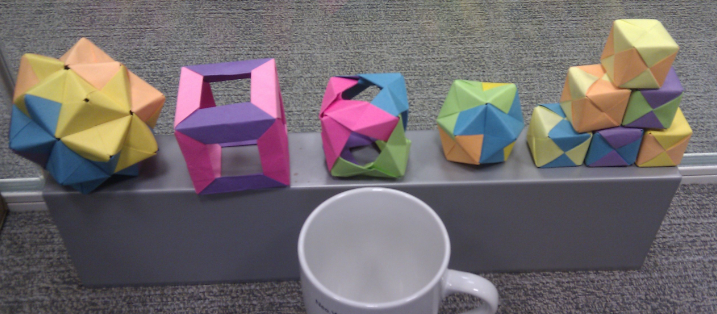
There is much to see and try in the world of modular origami (twitter, wikipedia, pinterest, …), with myriad different base units, each of which can build many different structures.
The use of post-its as the source material cuts down the possibilities. The sticky strip on the post-it has to go somewhere, and often interferes with the folding or (more often) with the plugging together afterwards.
I settled on 3 particular base units which seemed to work well with square post-its. The post-its add some strength to the folded units, when compared with using plain paper. And since these units lock together particularly well anyway (more so than many of the other units), you can build some satisfyingly large, robust, self-supporting structures. The sticky strip just means a little extra care is sometimes needed during folding, or a little more vigor when plugging some of the units together.
In order of relative unit-folding difficulty, easiest first:
- Tom Hull’s PHiZZ unit (Pentagon-Hexagon Zig-Zag)
- the Sonobe unit
- Tomoko Fuse’s Open Frame II
If/when you get the bug, you will be folding the same units 100s of times and, as a matter of course, you will start optimising your own preferred way of folding them, to minimise effort, and maximise accuracy and speed of production.
Basic origami advice also stands.
- Try to make each crease sharp and accurate, so the units are identical.
- The more you handle each piece, the wetter (and weaker) it gets. This can become an issue when you get down to connecting the last few pieces needed to complete a large structure. Those connections can be very fiddly and take quite a while, all the time your sweat is messing with the paper.
Tom Hull’s PHiZZ (Pentagon-Hexagon Zig-Zag)
This is the simplest of the units to fold. The units only connect in threes, so the structures get bigger more quickly.
Tom Hull has written some clear instructions for folding his PHiZZ unit.
When trying this with square post-its, just make sure you start with the post-its in the same orientation each time, sticky side up and along the top, so that when you ‘accordion pleat it into fourths’, the sticky strip is fully in one of those fourths, and then folded fully inside the unit.
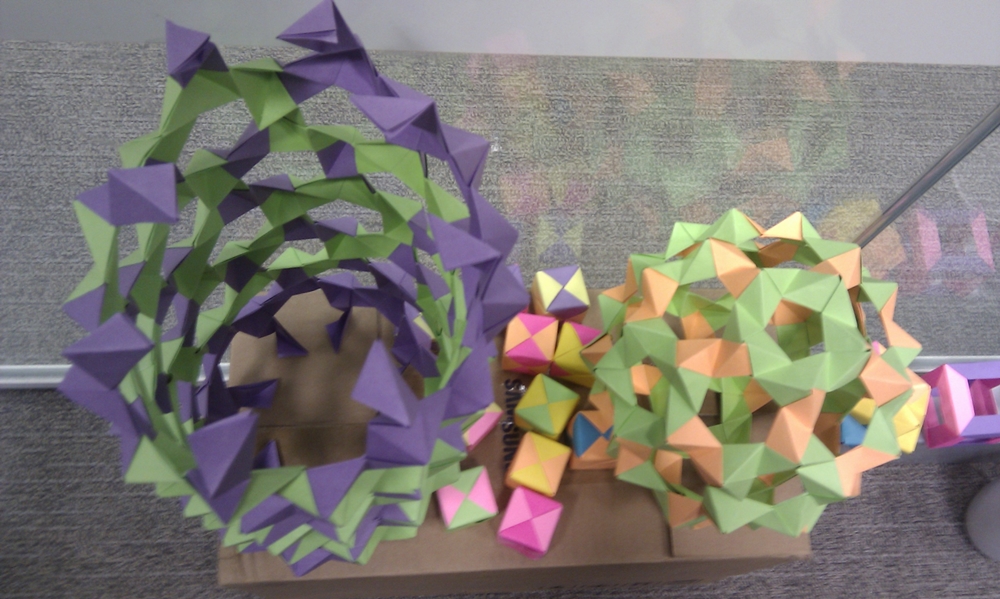
The Sonobe Unit
The Sonobe Unit has it’s own wikipedia page.
The origami-instructions site has some clear instructions for folding Sonobe units with normal, square paper.
When trying this with square post-its, there are some points to note:
- align the post-it so the sticky strip is face up and running horizontally (when using the above instructions), so the sticky strip ends up inside the unit
- when you fold the sticky part of the post-it over, make the crease sharp but don’t press the sticky face down hard - you need to lift it up again for the next fold.
- when you slot the units together, some of the pockets will be stuck shut by a portion of the sticky strip. You just need to poke the new unit in with a bit of vigor, and the pocket easily opens up.
There are lots of Sonobe-based examples on that site, and elsewhere.
Here is another set of instructions, this time for actually using post-its.
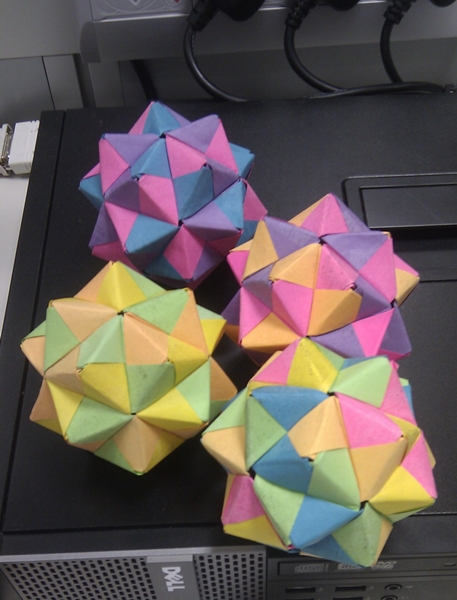
Tomoko Fuse’s Open Frame II
This is my favourite of the units in this set. I got it from Tomoko Fuse’s book, Unit Origami: Multidimensional Transformations. The book is packed full of a huge variety of modular origami units and structures, and seems to be widely available second hand.
These instruction videos do a reasonable job of explaining how to fold the unit:
Tomoko Fuse’s Open Frame II unit is a little more complex to make than the Sonobe unit, and shares the same need for the sticky side to be peeled open again, so don’t press it down too hard initially (but do make the creases sharp). Once the unit is made, the sticky side is fully enclosed and does not affect subsequent joins.
The Open Frame II units can be connected together in different numbers at the nodes. Of the units here, they make the best cubes. In fact, they can make all the Platonic solids.
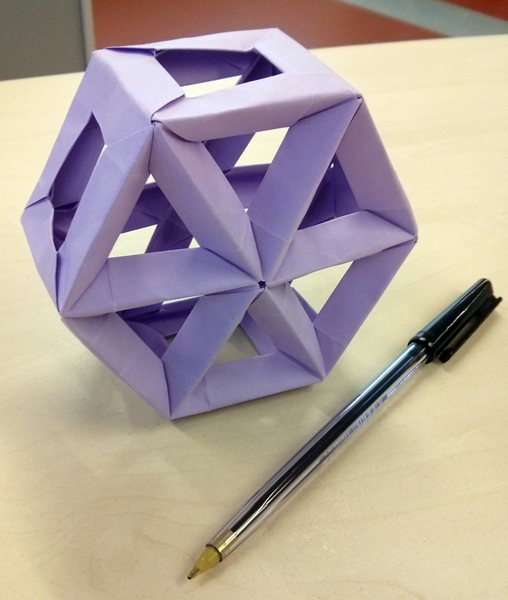
And lastly, they were the basic units for this beast
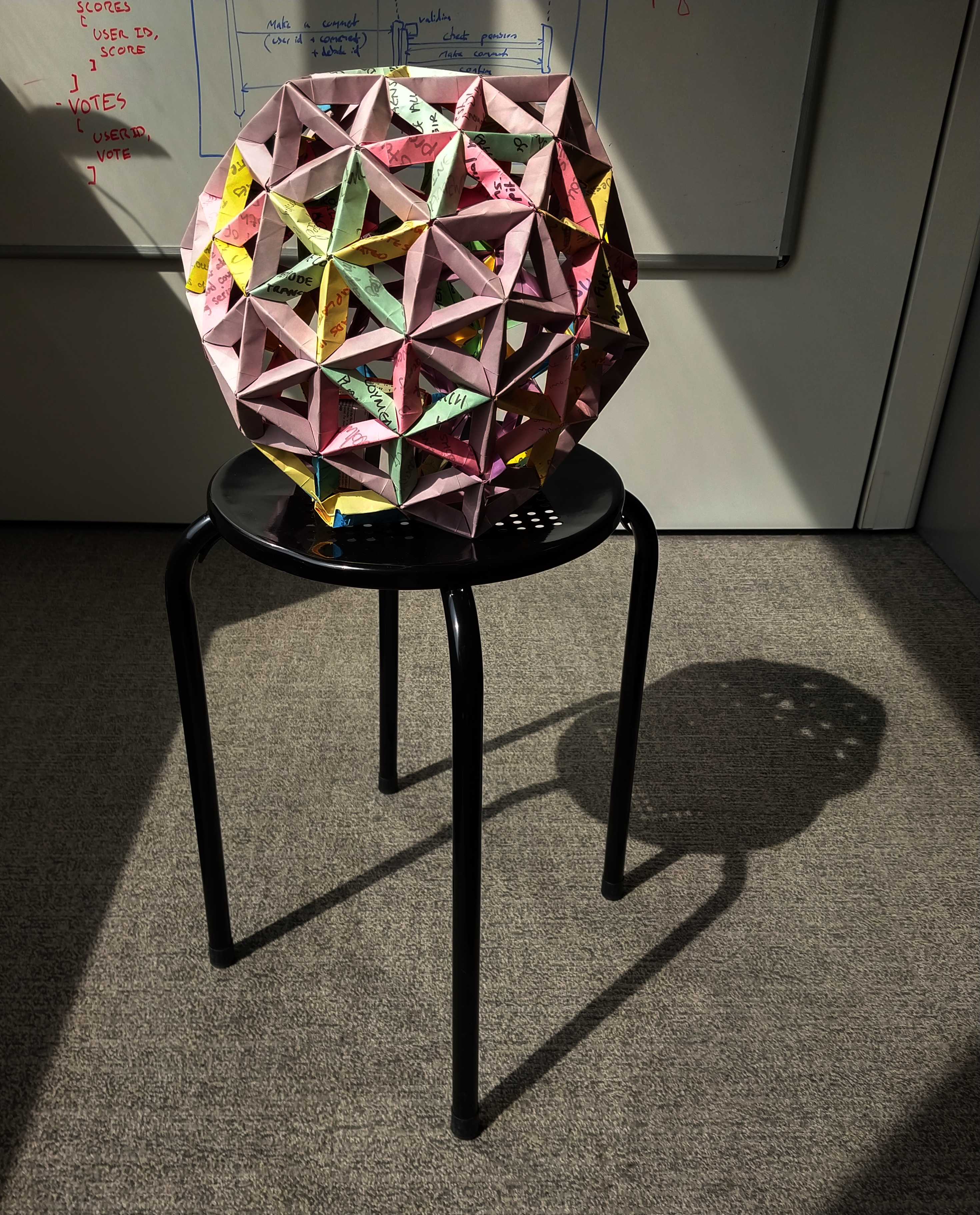
...
<<PREV NEXT>>
...
Modular Origami with post-its
(from Fragments of writing)
by Chris Gathercole
http://stories.upthebuzzard.com, RSS
published: 29 April 2019
...
This work is licensed under a
Creative Commons, ATTRIBUTION-NONCOMMERCIAL-SHAREALIKE 4.0 INTERNATIONAL License (CC BY-NC-SA 4.0).
...
mashup (... er, what?)
...
Credits ...
Context
Inspired by the getting-rid-of an old work of modular origami, I went looking for the various technical details which it turned out I had forgotten. Here are those details.